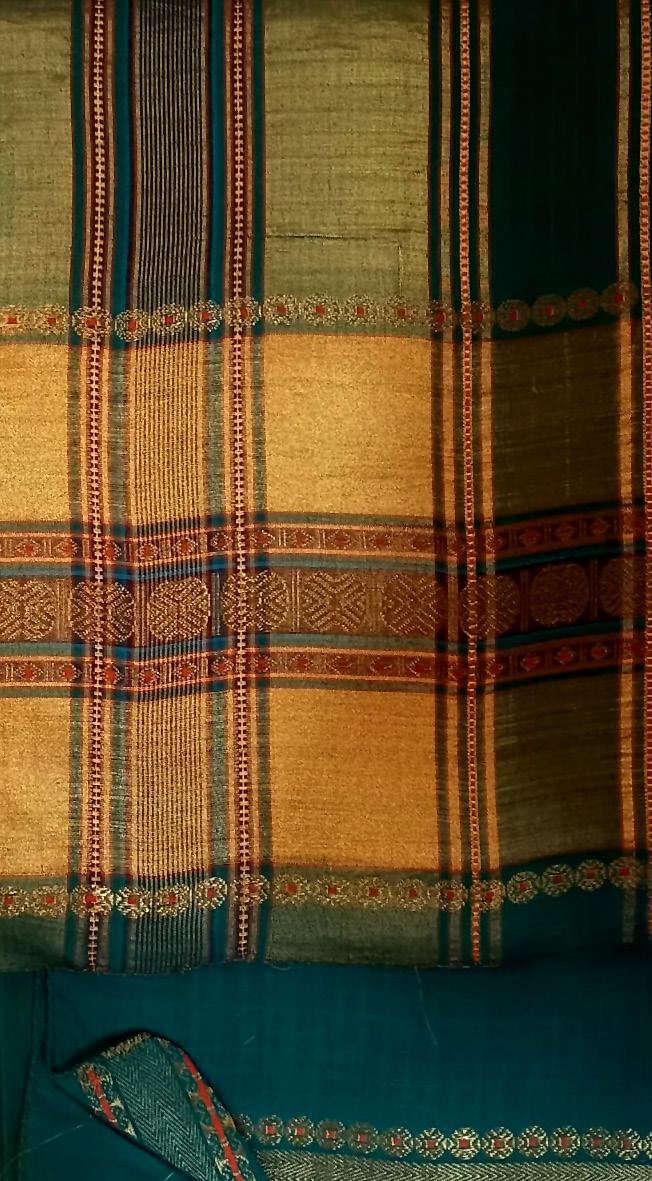
5 minute read
Venkatagiri: Reviving A Royal Weave
There is no weave like the Venkatagiri for the 82-year-old Pramadwara Devi. Married into the Venkatagiri royal family, she has been associated with the weave synonymous with her in-law’s family almost all her life.
Mallik Thatippali meets the royal matriarch and learns that efforts are on to preserve this precious weave which has lost its lustre of late
Advertisement
Venkatagiri, a heritage weave which dates back to the early 1700s, is indigenous to Venkatagiri that is in Andhra, near Tirupati. It has always been known for its delicacy, and fine cotton weaving. Pramadwara Devi, born into a Zamindar family near Eluru in Andhra Pradesh, was married into the Venkatagiri royal family in 1950. Her fatherin-law was the last Raja of Venkatagiri. In a conversation, she recalls fondly how she has been wearing the Venkatigiri ever since she got married in 1950.
She recounts, “This is the only saree we wore, both for daily and festive wear. It has a high thread count and is very fine with a pure zari border.”
Rich history
Venkatagiri sarees were originally made only in cotton and were known for their finesse. Pramadwara Devi’s collection includes over 200 vintage sarees in subtle shades of creams and pinks with silver zari borders.
The weavers of Venkatagiri were supported by the royals of the Velugoti dynasty of Nellore. In fact, the pure zari border (used in the weft), fine weaving and unique design made it popular, both with the Andhra royalty and later with the Nizam of Hyderabad. The local zamindars had their own clusters of weavers who made sarees exclusively for them.
Pramadwara Devi recalls, “They were ideal for the humid summers of the region. When it is properly ironed and starched, it gives a regal look that is unmatched amongst the length and breadth of Indian weaves.” Traditionally, the weave was made from cotton, (as it is located in the cotton belt of Andhra) though now one can also find the sarees in cotton silk and silk.
These fine fabrics were decorated with Jala and Jamdani motifs, making it one of the few weaving clusters in the south that pioneered the technique of hand buttas. The USP of the weave remains that it uses Jamdani designs of peacock, parrot, and swan in the pallu.
The post-Independence era saw the weave falling on hard times. There are multiple reasons for this: its association with the elderly, the cheaper power loom alternatives and the fact that the maintenance of the weave is a laborious process, all led to its decline
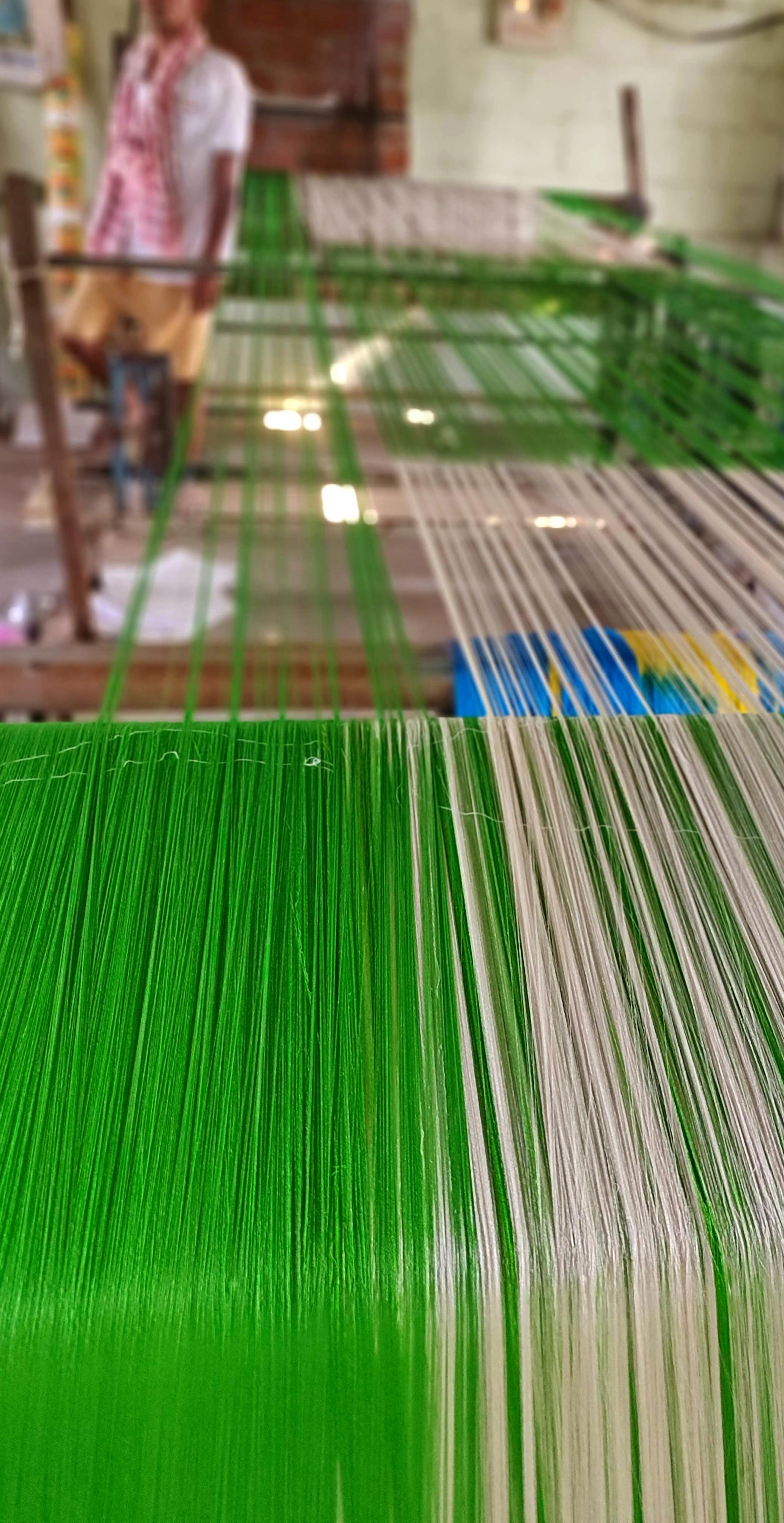
Subramanyam Patnam, a thirdgeneration weaver and a winner of the central government’s National Merit Certificate for his saree, which has an embroidered Rama and Sita on the pallu calls this a weave for all seasons. He explains, “Its finesse is due to the high cotton count (300 and above). It is why they are also referred to as ‘woven air’.”
Changing tastes and methods
In the post-Independence era, the Venkatagiri weave fell on hard times.
There are multiple reasons for this: its association with the elderly, the cheaper power loom alternatives and the fact that the maintenance of the weave is a laborious process, all led to its decline. From over 10,000 weavers who worked on Venkatagiri sarees in the early 2000s, today there are just a mere 20. The quality has also been downgraded (cotton count has fallen from a high of 300s to coarser 80s), because of high costs.

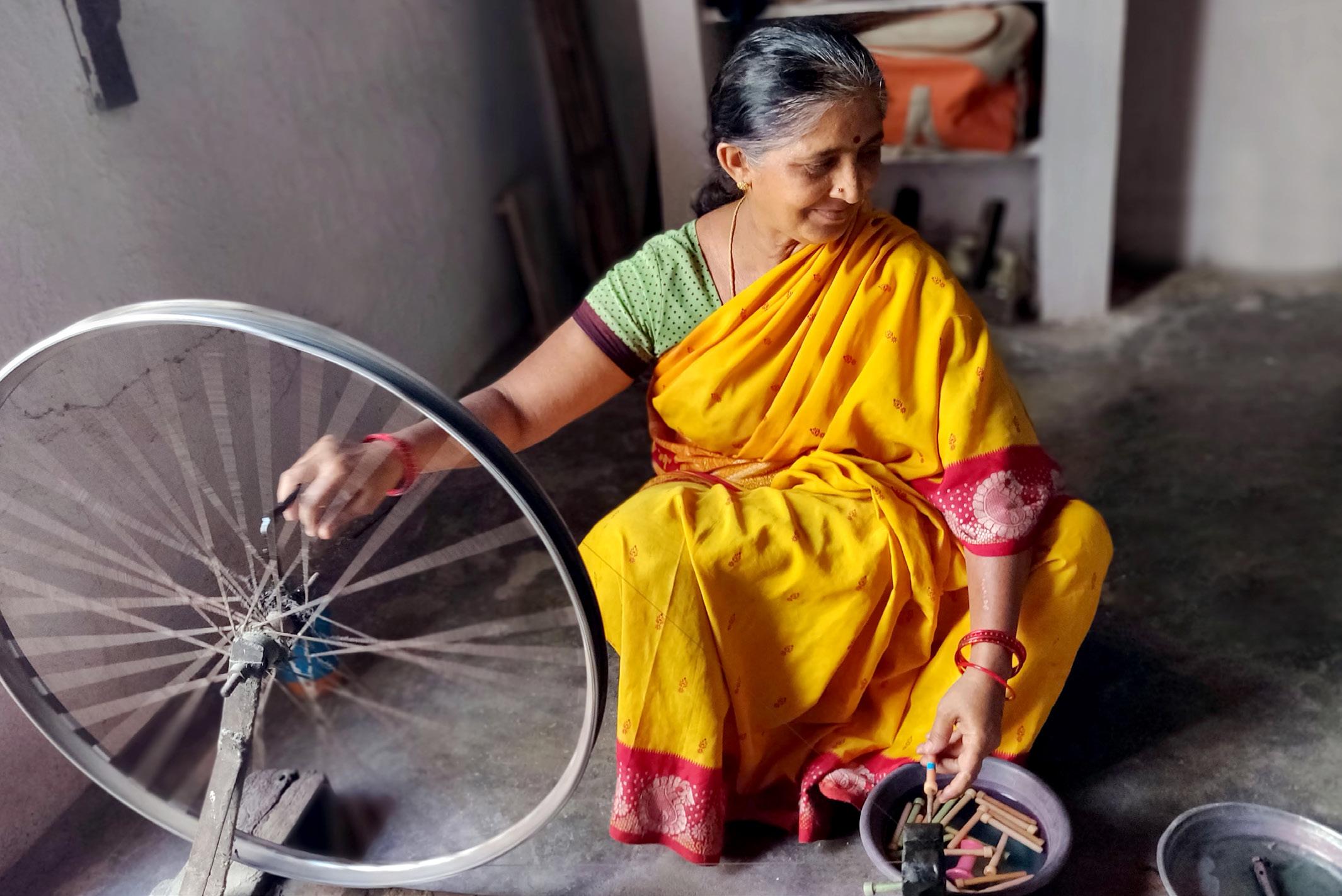
One of the main reasons why even diehard enthusiasts stayed away from wearing the saree was the difficulty in maintaining it. This saree needs to be spread out, handwashed and starched. As people moved from independent homes with backyards to apartments, handling the saris became tougher due to lack of space.
Pradmadwara Devi agrees and says that even half a century ago, the weave had dedicated dhobis to maintain it. She recalls, “Not everyone could wash
Pramadwari Devi is trying her best to revive the weave close to her heart
Pramadwari Devi is trying to do her bit to preserve the weave for the future. From gifting it to eminent personalities like the late Carnatic doyen ML
Vasanthakumari, singers
P Susheela and Sudha and starch these sarees, we had special dhobis to handle these. The process involves two people having to hold the sari to starch and spread it out,” she says.
Raghunathan as well as Sunil Gavaskar’s wife Marshneil, to working with weavers, she is in the thick of it all.
However, now there is an active push to revive the weave. Initially, the weave was only five and a half feet, but over the years, Venkatagiri weavers have pushed the envelope and weaved in additional wefts to the body and the pallu of the saree.
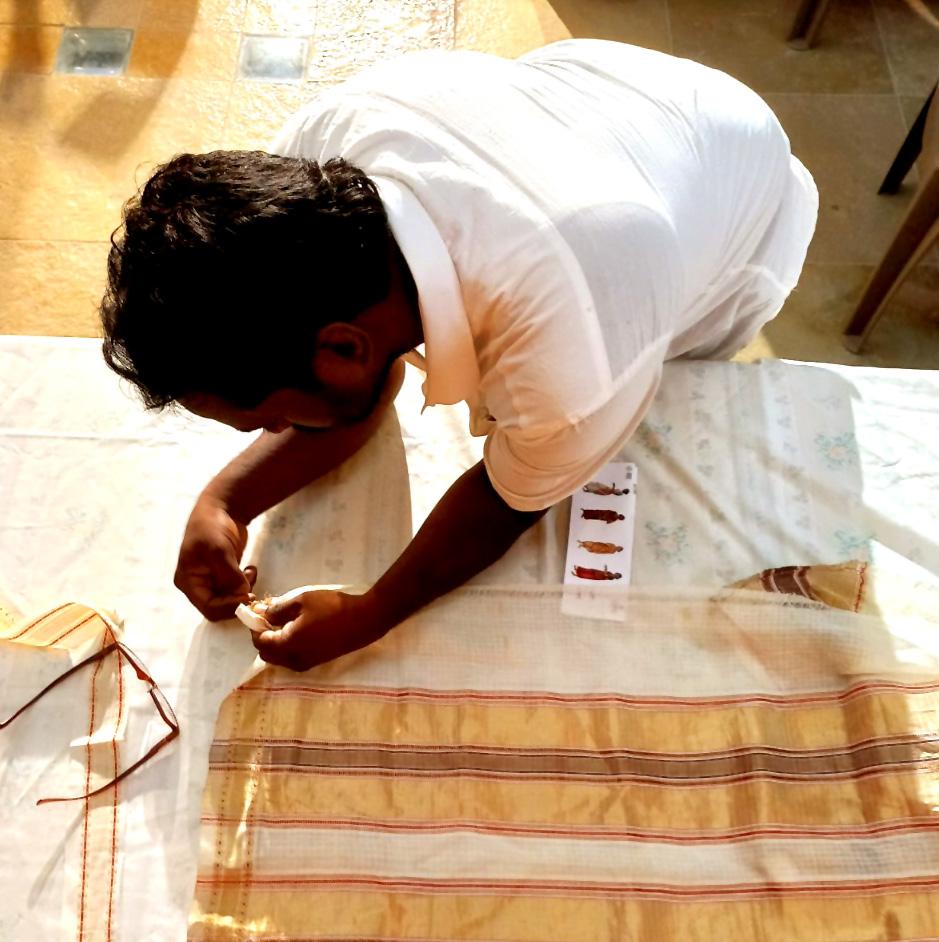
Rema Kumar, who runs the brand Textile Tales and works exclusively with Indian weavers says, “The weave needs to be reconnected with the young. Today’s weavers have no idea of the intricate designs their forefathers created due to the lack of documentation. Also, the weavers tried to copy the Kanjeevaram sarees, which caused the Venkatagiri weave to lose their uniqueness.”
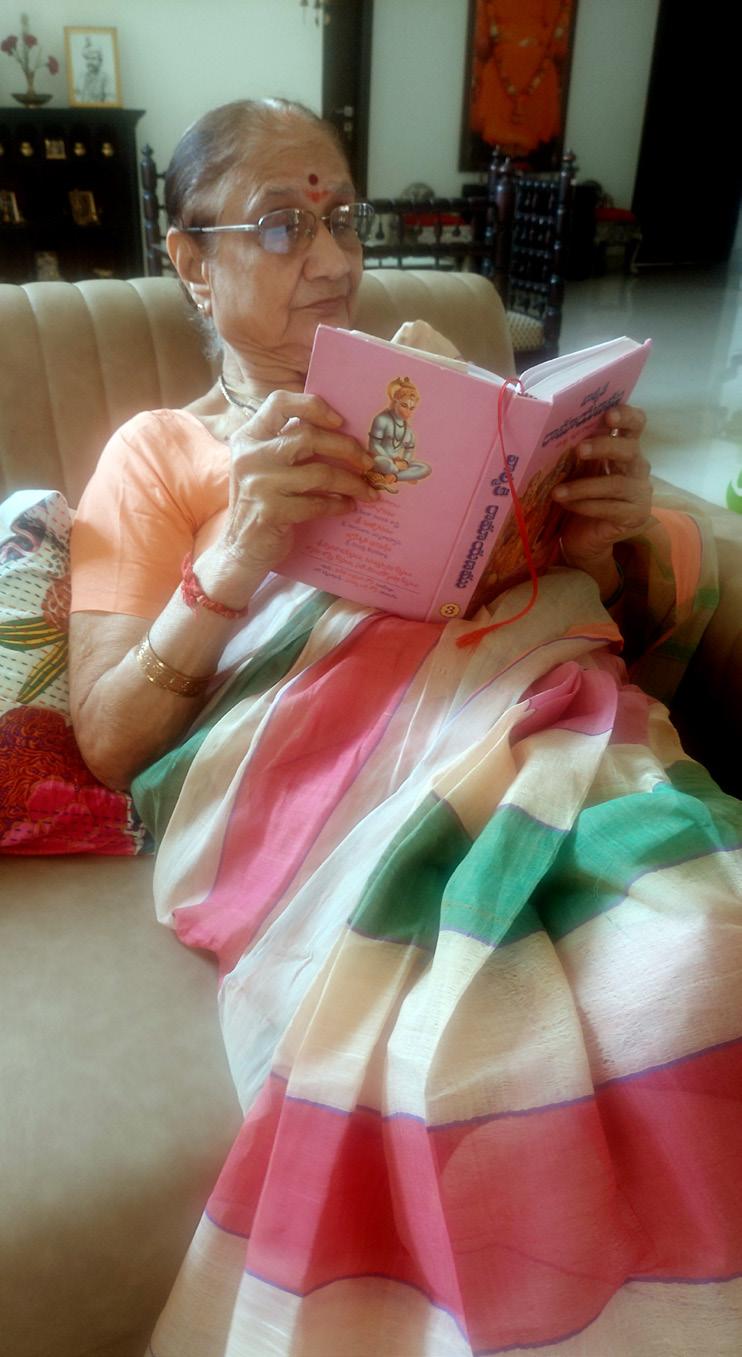
Designers like Kumar and initiatives like the Tata Antaran Incubation and
Design Centre (based in Venkatagiri) are trying to address these issues. From embracing newer, colours and styles, they are actively working towards helping the weave regain its luster.
Patnam also points out that they are now on WhatsApp and Instagram and are creating fabrics for men’s shirts and women’s kurtas for the first time.
“Traditionally the saree was in gold and cream but we are trying natural colours (greens and pinks) and new motifs (tear drops, bindis and trees) for the younger generation,” he adds. Kumar is also collaborating with the weavers of Venkatagiri for an upcoming collection in summer. “This endeavour was to give them exposure to the traditional heirlooms from the family wardrobes of textile enthusiasts of Hyderabad, who are eager to see the old designs revived. Over the years, the beauty of this weave has been diluted by the influence from
The time-honoured Venkatagiri weave is at a crucial juncture other popular weaves due to market demands and the original essence was lost,” she adds.
The octogenarian royal too is actively trying her bit as well to ensure that the weave is preserved for the future. From gifting it to eminent personalities (the late Carnatic doyen ML Vasanthakumari, singers P Susheela and Sudha Raghunathan as well as Sunil Gavaskar’s wife Marshneil) to working with weavers, she is in the thick of it all. Even today, she buys her Venkatagiri sarees from the descendants of weavers she initially encountered in the 50s.
The time-honoured Venkatagiri weave is at a crucial juncture. One hopes that it springs back to life and the visuals of brightly-toned, crisply starched Venkatagiri sarees are not consigned to people’s memories. Pramadwara Devi, though doubtful, remains hopeful and signs off saying, “There is no weave like the Venkatagiri.”
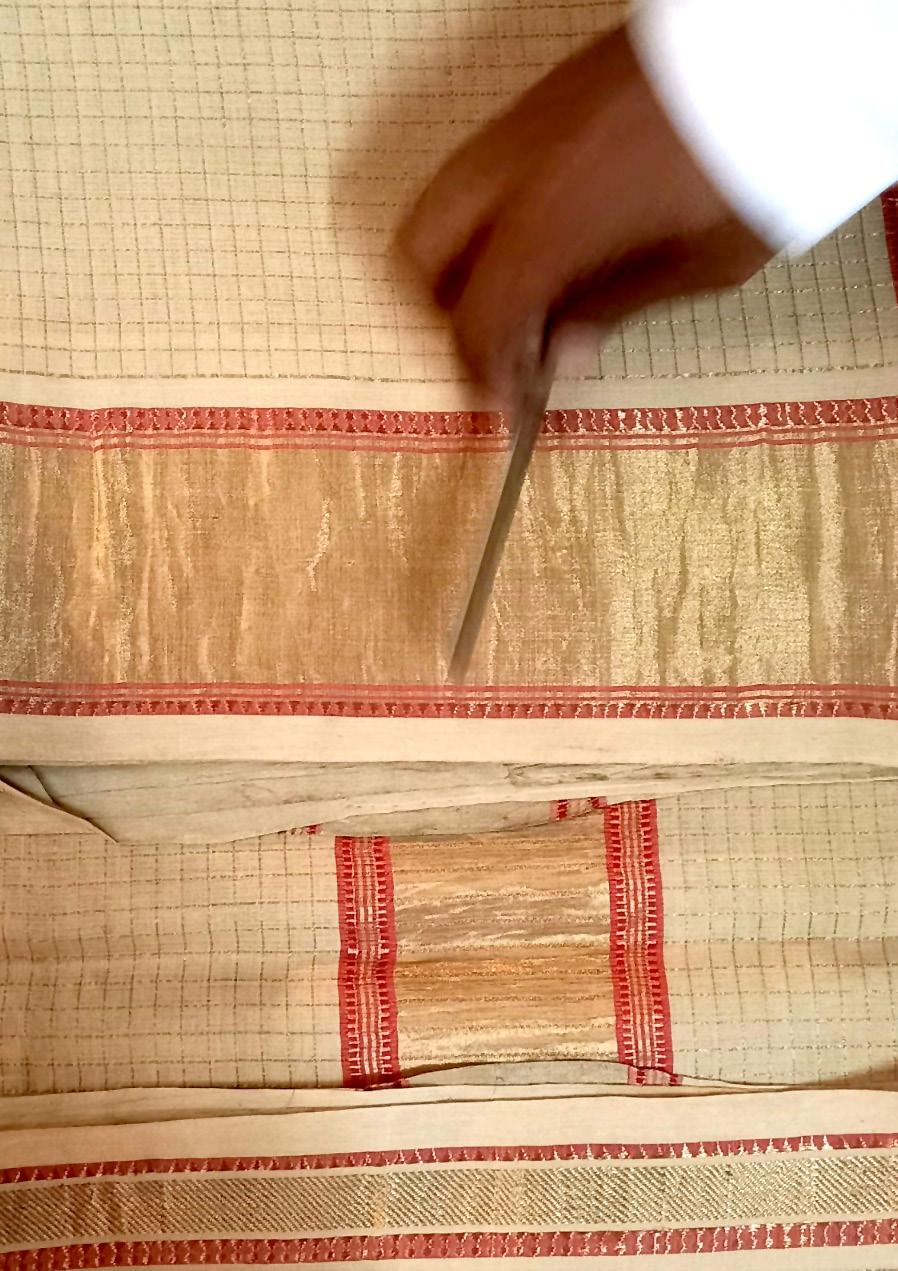
Truly, this is a sari that is beloved to the Telugus and in fact, it is popular all over south India.
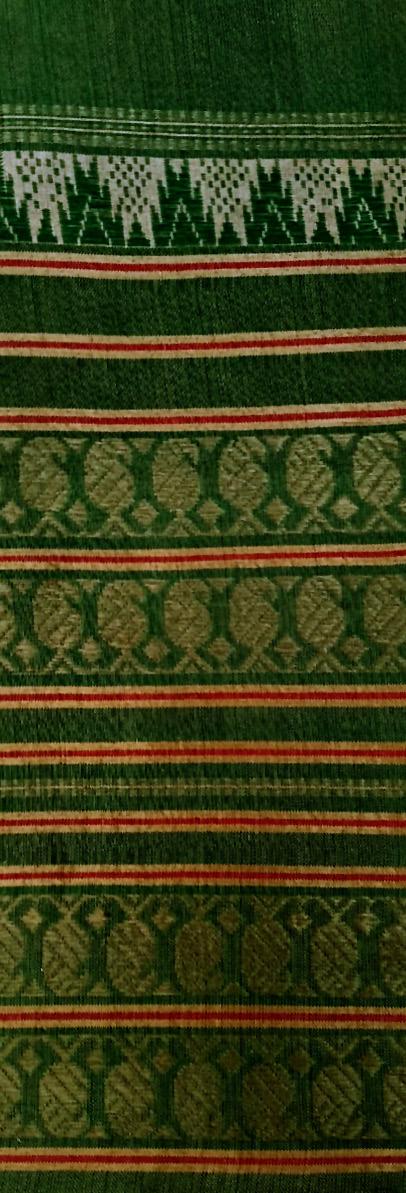
In the 1950s, actress Nargis Dutt received a white Venkatagiri saree from Pramadwara Devi, the royal scion from the town of Venkatagiri near Tirupati. She wrote back with a thank you note saying that she wore the saree for a dinner party and she was much appreciated by her fellow guests. This was also recently recounted by actor Sanjay Dutt when he shared that his mother’s fan following far surpassed his and that she even got sarees gifted by royalty!







